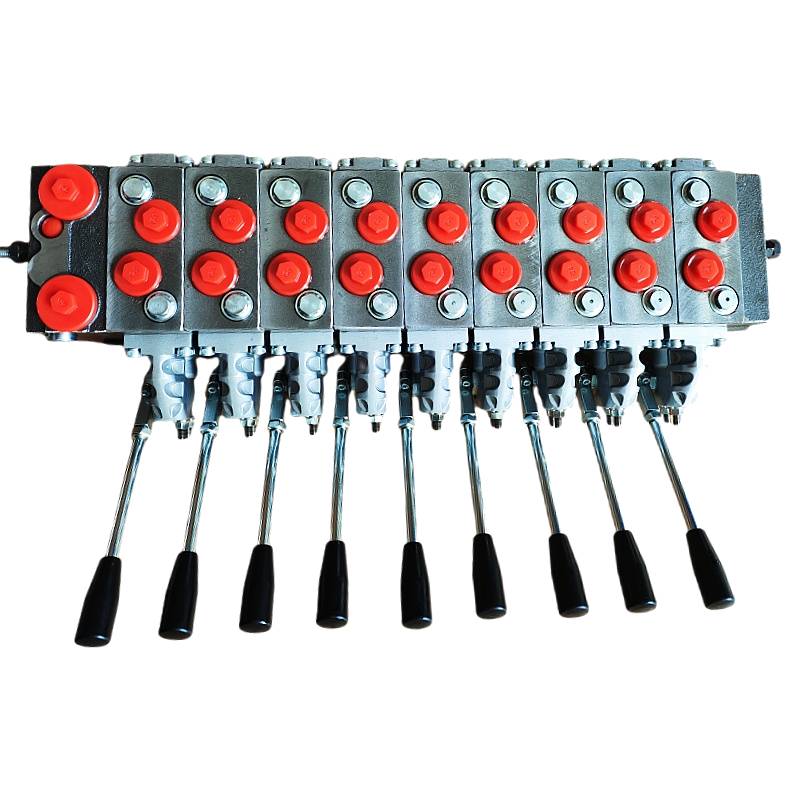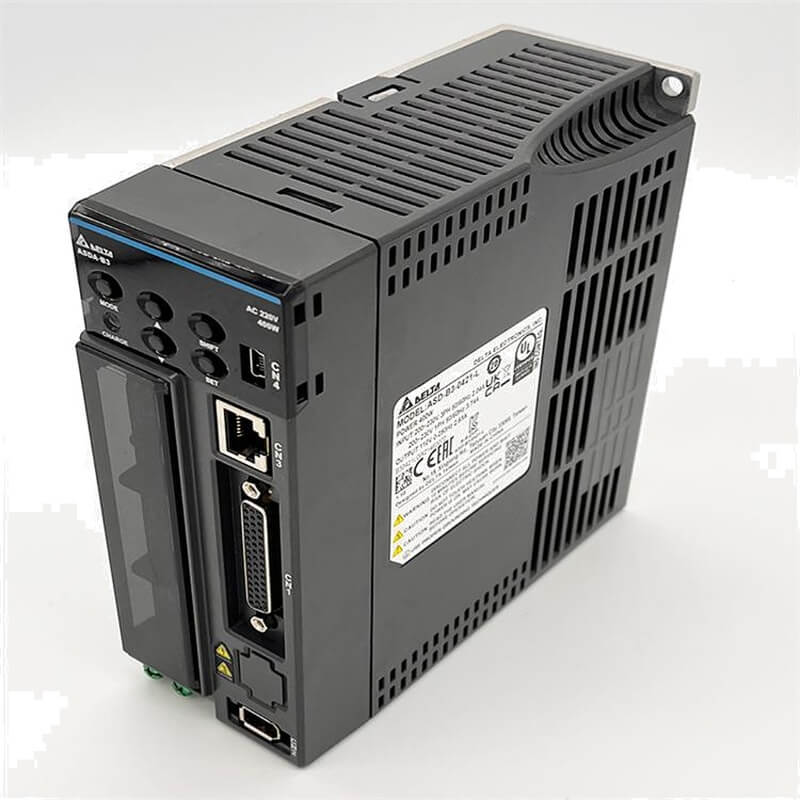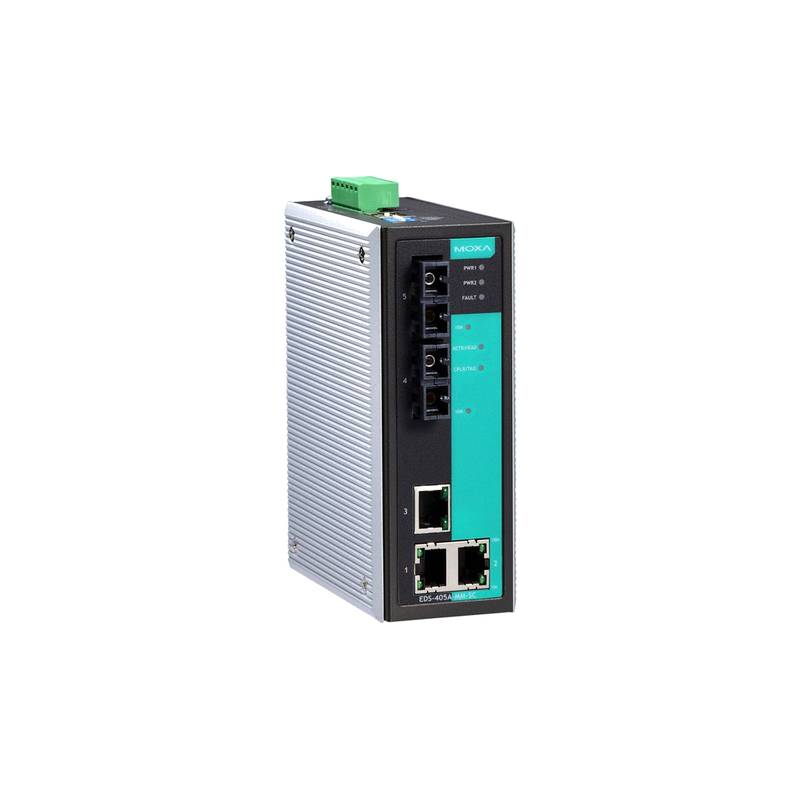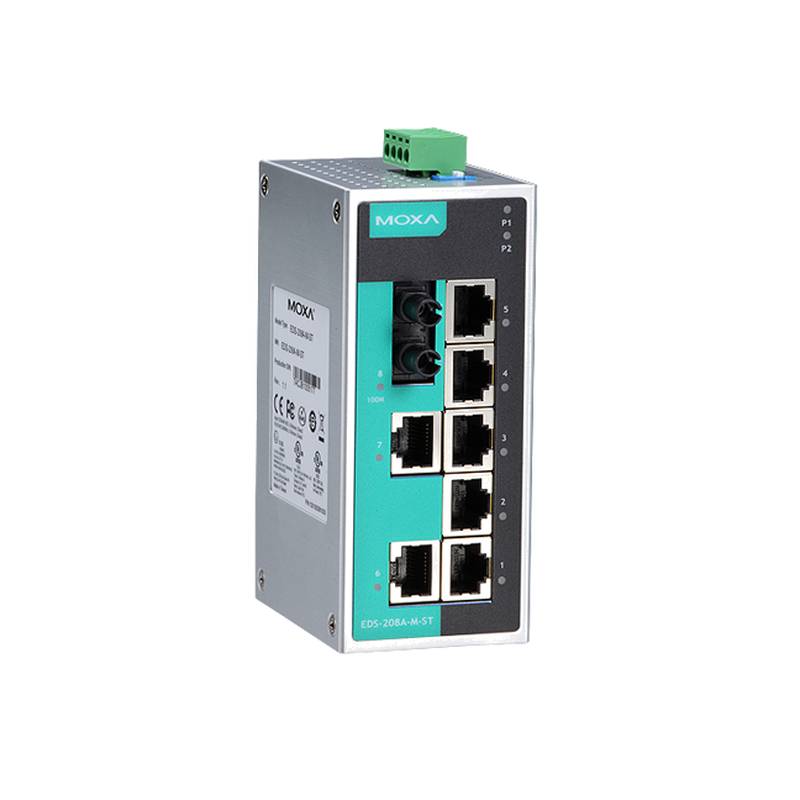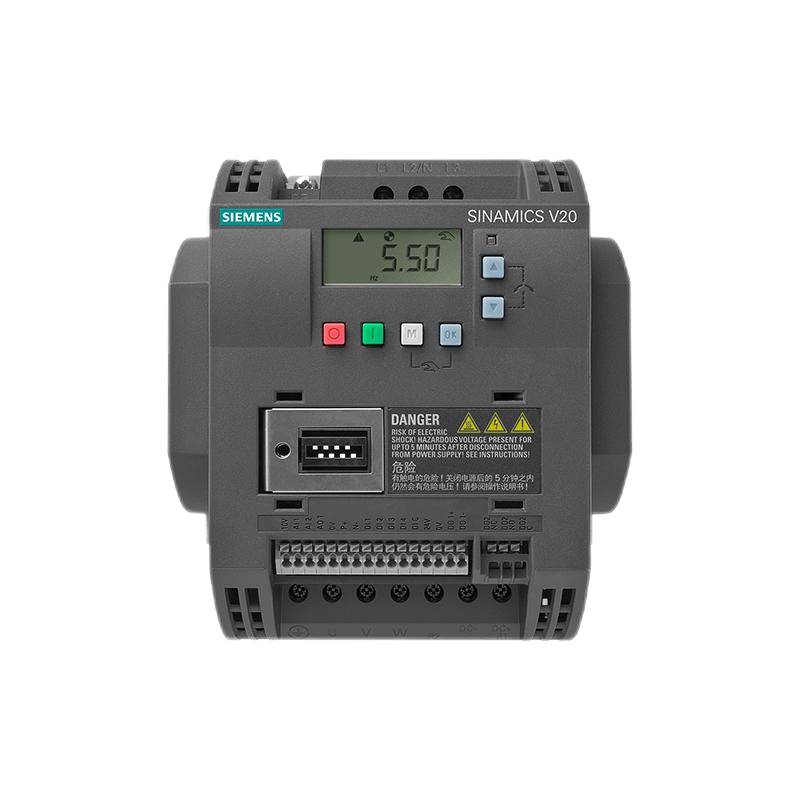
The YOULI YL-PV4/4S Hydraulic Proportional Valve represents a sophisticated solution for precise fluid power control, offering a blend of advanced technology and robust design suitable for demanding industrial and mobile applications. This valve excels in load-independent flow control, ensuring consistent actuator performance regardless of system pressure fluctuations. Its modular design enhances flexibility, allowing for tailored configurations to meet specific application requirements. The YL-PV4/4S incorporates load-sensing capabilities, which significantly improve energy efficiency, reduce heat generation, and extend system lifespan by optimizing pump output. Key technical parameters include a maximum operating pressure of 350 bar (5075 psi) for ports P and A/B, and 40 bar (580 psi) for port T. The operational temperature range is from -20°C to 90°C (-4°F to 194°F), with an oil viscosity range of 15-75 mm²/s (cSt). Filtration recommendations are a minimum of 10 µm, with a maximum internal leakage of unspecified but critically low levels to maintain precision.
Core Features & Market Positioning
The YOULI YL-PV4/4S distinguishes itself through its advanced electrically controlled proportional capabilities, offering variable control of flow, pressure, and direction in response to an electrical input signal. Unlike basic directional valves, it provides infinitely variable spool positioning, enabling smooth acceleration and deceleration of hydraulic actuators, thereby reducing system shock and wear. This precise control translates directly into enhanced process quality and operational efficiency. The valve's design is often highlighted for its interchangeability with components from established brands like Danfoss (PVG range), positioning it as an economically viable yet high-performance alternative for servicing and upgrades. Its market position is solidified by its balance of performance, reliability, and cost-effectiveness, making it a compelling choice for OEMs and end-users seeking to upgrade from simpler valve technologies without the complexity and cost associated with full servo-valve systems.
Key Application Scenarios
The versatility of the YOULI YL-PV4/4S Hydraulic Proportional Valve makes it suitable for a broad spectrum of industries. In mobile hydraulics, it is extensively applied in construction machinery such as excavators and wheeled loaders, as well as in agricultural equipment like tractors and telehandlers, where precise control over boom, stick, and attachment movements is critical. The YL-PV4/4S is also utilized in material handling equipment, including vehicle-mounted cranes and forklifts, optimizing lifting and positioning operations. Furthermore, it finds application in public works and utility vehicles, marine equipment, and various industrial automation processes requiring precise control of hydraulic cylinders and motors. Its ability to provide load-independent flow control is particularly beneficial in applications demanding consistent speed and force, regardless of varying load conditions.
Practical System Integration Guidance
Integrating the YOULI YL-PV4/4S into a hydraulic system requires careful consideration of electrical interfaces and hydraulic plumbing. The valve's proportional solenoid receives a command signal (typically 0-10V or 4-20mA) from a controller, such as a PLC or a dedicated motion controller. For optimal performance and closed-loop control, external feedback devices like linear displacement transducers or rotary encoders are often integrated to provide actuator position data to the controller. The system must also incorporate appropriate filtration, with a recommended minimum of 10 µm, to protect the valve's tight internal tolerances and ensure longevity. The valve's modular design allows for various configurations, including open-center and closed-center pump side modules, and can be adapted for load-sensing systems when paired with variable displacement pumps for enhanced efficiency.
Operation and Risk Mitigation
Safe and efficient operation of the YOULI YL-PV4/4S hinges on understanding its control principles and adhering to recommended practices. The valve's proportional solenoid generates a magnetic force proportional to the input current, precisely positioning the spool to regulate hydraulic flow. In its de-energized state, a spring-centering mechanism typically returns the spool to a safe, blocked position, providing a fail-safe condition. To mitigate operational risks, maintaining fluid cleanliness is paramount. Contamination, even in small particles, can cause abrasive wear, increase internal leakage, or jam the spool, leading to valve failure. Therefore, adherence to the recommended 10 µm filtration is crucial. Troubleshooting should follow a systematic approach, starting with verifying electrical signals and connections before assuming a component failure. Using specialized test boxes that monitor spool position feedback, command signals, and power supply can help isolate issues to the valve, its electronics, or the broader hydraulic system, preventing unnecessary part replacements.
Scalability & Long-Term Value
The YOULI YL-PV4/4S offers significant long-term value through its inherent scalability and compatibility. Its modular construction facilitates system expansion or modification, allowing for the addition or reconfiguration of valve sections to accommodate changing operational demands. Furthermore, its design is often interchangeable with components from leading manufacturers, providing flexibility in sourcing and servicing, and ensuring continued operation even if primary supply chains are disrupted. As the industrial landscape moves towards greater digitalization and the Industrial Internet of Things (IIoT), proportional valves like the YL-PV4/4S, when integrated with appropriate controllers and sensors, can become crucial nodes in smart hydraulic systems. This enables advanced diagnostics, predictive maintenance, and optimized system performance through data acquisition and analysis, ensuring the valve remains a valuable asset in evolving automation strategies.
*
Frequently Asked Questions
Q1: What is the maximum flow rate for the YOULI YL-PV4/4S?
The precise maximum flow rate for the YOULI YL-PV4/4S is not universally specified as a single figure and can vary significantly based on the specific spool configuration and internal porting of the chosen valve section. However, for direct-operated proportional valves like this series, typical nominal flow rates can range from approximately 20 L/min upwards, with considerations for system pressure and pressure drops across the valve.
For applications requiring higher flow rates, two-stage proportional valve designs are typically employed. These systems utilize a smaller pilot valve to control a larger main spool. The PV-4 series is designed to offer a balance of precision and flow capacity suitable for many mobile and industrial applications, but detailed specifications for specific spool options are necessary for exact flow rate determination.
Engineers must consult the detailed datasheets for the specific YL-PV4/4S configuration being considered. These documents will provide precise flow charts and pressure drop curves related to different spool types and their corresponding electrical input signals.
Q2: How does the load-sensing feature of the YL-PV4/4S improve efficiency?
The load-sensing (LS) feature optimizes hydraulic system efficiency by enabling the pump to match its output to the actual demand of the actuator. Instead of running at maximum capacity and bypassing excess flow (which wastes energy and generates heat), the LS system provides feedback to the pump's control. This feedback signal, derived from the highest work port pressure, tells the pump to adjust its displacement to meet the required pressure and flow, minimizing energy waste.
By operating only at the necessary pressure and flow levels, the system significantly reduces energy consumption and heat generation. This not only lowers operating costs but also extends the life of hydraulic fluid and components by reducing thermal stress. The YL-PV4/4S, when integrated into an LS system, contributes to a more responsive and efficient hydraulic circuit.
This precise matching of pump output to system demand also enhances controllability and safety. It allows for smoother operation and prevents over-pressurization in the system, contributing to overall machine reliability and performance.
Q3: What is the typical electrical input signal required for the YL-PV4/4S?
The YOULI YL-PV4/4S typically operates using a proportional electrical input signal, which translates into a corresponding spool position. Common signal types include analog voltage signals, frequently in the range of 0-10V, or analog current signals, such as 4-20mA. These signals are sent from a machine controller, like a PLC or a dedicated motion controller, to the valve's integrated electronics or an external proportional amplifier.
The proportionality means that the magnitude of the electrical signal directly dictates the degree to which the valve spool is opened or shifted. A low signal might result in a small opening for low flow, while a higher signal commands a larger opening for increased flow or force. This allows for fine-tuned, stepless control over actuator speed and force.
It is crucial to ensure that the controller's output signal type and range are compatible with the valve's input requirements. Mismatched signals can lead to erratic operation, poor performance, or even damage to the valve or controller.
Q4: Can the YL-PV4/4S be used in closed-loop control systems?
Yes, the YOULI YL-PV4/4S can absolutely be used in closed-loop control systems. While the valve itself provides proportional flow control based on an input signal, closed-loop operation requires external feedback to achieve precise positioning or velocity control. This is typically accomplished by integrating a position transducer (e.g., LVDT, encoder) or a speed sensor with the hydraulic actuator.
The feedback sensor's output is sent to a controller (like a PLC or motion controller). The controller compares the actual position or speed to the desired setpoint and continuously adjusts the command signal sent to the YL-PV4/4S. This creates a feedback loop that automatically corrects any deviations, ensuring the actuator reaches and maintains the target position or speed with high accuracy.
This closed-loop configuration significantly enhances performance, enabling applications that require very precise movements, repeatability, and adherence to complex motion profiles, overcoming system variations and disturbances.
Q5: What are the maximum pressure ratings for the YOULI YL-PV4/4S?
The YOULI YL-PV4/4S hydraulic proportional valve is designed to handle significant pressures within a hydraulic system. The maximum allowable pressure for the main inlet port (P) and the work ports (A and B) is rated at 350 bar (approximately 5075 psi). This high pressure rating makes the valve suitable for robust industrial and heavy mobile machinery applications.
However, the tank port (T), which serves as the return path for hydraulic fluid, has a lower maximum pressure rating of 40 bar (approximately 580 psi). It is critical to ensure that the system design prevents the return pressure from exceeding this limit to avoid damage to the valve.
Adhering to these pressure limits is essential for the safe and reliable operation of the YL-PV4/4S and the overall hydraulic system. Exceeding these ratings can lead to component failure, leaks, and potential safety hazards.
Q6: What is the recommended filtration level for the YL-PV4/4S?
Maintaining fluid cleanliness is critical for the longevity and performance of the YOULI YL-PV4/4S proportional valve due to its tight internal tolerances. The generally recommended filtration level is a minimum of 10 micrometers (µm) according to the ISO 4406 standard. This level of filtration is crucial to prevent abrasive wear and ensure smooth spool movement.
Even particles smaller than the operational clearances, which can be just a few micrometers, can cause significant damage over time. Larger particles can lead to spool jamming and complete valve failure. Therefore, employing high-quality hydraulic filters at appropriate points in the system is a vital preventative measure.
Implementing and maintaining a robust fluid filtration strategy, including regular filter changes and fluid analysis, is a cost-effective way to protect this precision component and ensure consistent operational performance.
Q7: How does the modular design of the YL-PV4/4S benefit users?
The modular design of the YOULI YL-PV4/4S offers significant advantages in terms of flexibility and customization. Users can configure the valve by selecting specific spools, spring options, and end modules to precisely match the requirements of their application. This allows for tailoring the valve's flow characteristics, control functions, and porting arrangements.
This modularity also simplifies maintenance and service. Individual valve sections can often be replaced or reconfigured without needing to replace the entire valve assembly. This reduces downtime and spare parts inventory, making it more economical for system maintenance.
Furthermore, the interchangeable nature of the valve sections, often compatible with industry standards like those from Danfoss, provides users with greater freedom in system design and upgrades. It allows for easier integration and replacement, offering a cost-effective option.
Q8: Can the YL-PV4/4S replace standard on/off solenoid valves?
Yes, the YOULI YL-PV4/4S can replace standard on/off solenoid valves in applications where precise control over actuator speed or force is required. Standard solenoid valves operate like simple switches, offering only full flow or no flow, resulting in abrupt movements. The YL-PV4/4S, as a proportional valve, provides infinitely variable control over flow.
This allows for smooth acceleration and deceleration of hydraulic actuators, significantly reducing system shock, wear on components, and improving the overall quality of operation. For instance, in mobile equipment, this results in smoother boom movements or more controlled steering.
However, it's important to note that proportional valves require a proportional control signal (e.g., 0-10V) and often a proportional amplifier or controller, unlike the simple on/off signal for standard solenoid valves. The transition requires an upgrade in the control system.
Q9: What are common troubleshooting issues with proportional valves like the YL-PV4/4S?
Common troubleshooting issues often relate to control signal integrity, electrical connections, and hydraulic fluid contamination. Problems like erratic spool movement, no movement, or incorrect speed control can stem from poor wiring, loose connections, or a faulty command signal from the controller. The valve's amplifier electronics can also fail.
Contamination is a major cause of proportional valve malfunction, leading to spool sticking, increased internal leakage, and reduced precision. Lack of proper filtration is a primary culprit here, necessitating regular checks of fluid cleanliness and filter condition.
Component failures, such as a faulty solenoid coil or an issue with integrated electronics or position feedback (LVDT), can also occur. System issues like incorrect pilot pressure or pump performance problems can also mimic valve malfunctions.
Q10: What is the role of the proportional amplifier or controller with the YL-PV4/4S?
The proportional amplifier or controller is essential for translating the low-power command signal from a PLC or machine interface into the appropriate electrical signal needed to drive the proportional solenoid of the YL-PV4/4S. It conditions and amplifies the input signal, often providing features like ramp-up/down for smooth valve response.
For valves with integrated electronics (OBE), the controller might still be a PLC or similar device, but the amplifier functionality is onboard the valve itself, simplifying wiring. For valves without OBE, an external proportional amplifier is required. These amplifiers manage the current or voltage supplied to the solenoid coil precisely.
In closed-loop systems, the controller also receives feedback from position or speed sensors and uses this information to continuously adjust the command signal sent to the valve, ensuring accurate and dynamic control.














